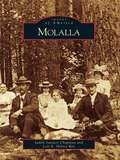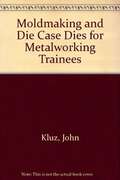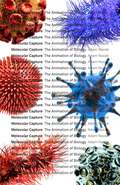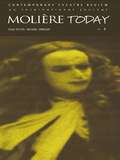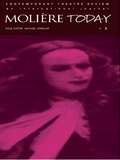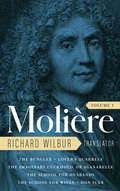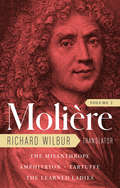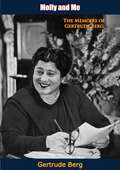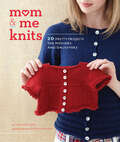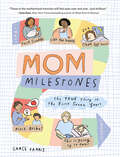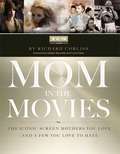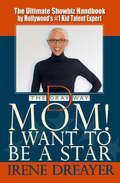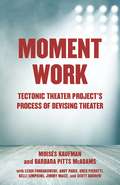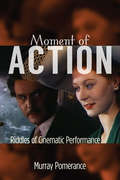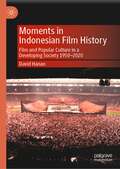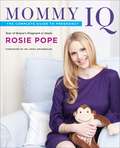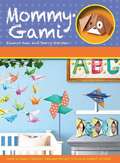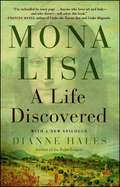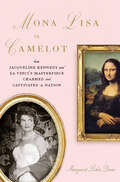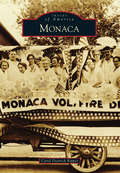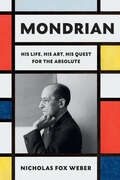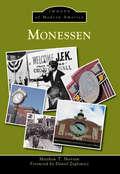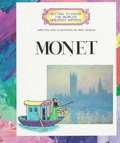- Table View
- List View
Molalla
by Lois E. Ray Judith Sanders ChapmanMolalla is a small community on the edge of the Willamette Valley where some of the first Oregon Trail settlers arrived in the 1840s. Thirty miles south of Portland and north of Oregon's capital at Salem, Molalla rests snugly against the foothills of the Cascade Mountains, watched over by snowcapped Mount Hood. Though close to the region's first capital at historic Oregon City, Molalla is an independent Western town famous for its annual Fourth of July Buckeroo rodeo and parade. Molalla grew as an important agricultural trade center but is best known for its logging operations and abundant lumber mills. People had long visited summer resorts along the Molalla River and rejuvenated at the now-vanished Wilhoit Mineral Springs resort. Molalla retains its small-town atmosphere and independent spirit, not unlike the pioneer forebears who made the Molalla Prairie their home.
Moldmaking And Die Cast Dies For Metalworking Trainees
by John KluzMoldmaking and Die Cast Dies for Metalworking Trainees
Molecular Capture: The Animation of Biology (Posthumanities #63)
by Adam NocekHow computer animation technologies became vital visualization tools in the life sciences Who would have thought that computer animation technologies developed in the second half of the twentieth century would become essential visualization tools in today&’s biosciences? This book is the first to examine this phenomenon. Molecular Capture reveals how popular media consumption and biological knowledge production have converged in molecular animations—computer simulations of molecular and cellular processes that immerse viewers in the temporal unfolding of molecular worlds—to produce new regimes of seeing and knowing.Situating the development of this technology within an evolving field of historical, epistemological, and political negotiations, Adam Nocek argues that molecular animations not only represent a key transformation in the visual knowledge practices of life scientists but also bring into sharp focus fundamental mutations in power within neoliberal capitalism. In particular, he reveals how the convergence of the visual economies of science and entertainment in molecular animations extends neoliberal modes of governance to the perceptual practices of scientific subjects. Drawing on Alfred North Whitehead&’s speculative metaphysics and Michel Foucault&’s genealogy of governmentality, Nocek builds a media philosophy well equipped to examine the unique coordination of media cultures in this undertheorized form of scientific media. More specifically, he demonstrates how governmentality operates across visual practices in the biosciences and the popular mediasphere to shape a molecular animation apparatus that unites scientific knowledge and entertainment culture.Ultimately, Molecular Capture proposes that molecular animation is an achievement of governmental design. It weaves together speculative media philosophy, science and technology studies, and design theory to investigate how scientific knowledge practices are designed through media apparatuses.
Moliere Today 1
by Michael SpinglerThis collection focuses on Moliere's theatre as works to be performed as well as read. The essays deal in their various ways with limits which are imposed and respected or violated and broken. The question of transgression both as a subject within Moliere's plays and as a dilemma confronting Moliere's critics and interpreters is addressed. The book aims to enlarge the scope of academic scholarship and include the thinking and insights of actors.
Moliere Today 2
by Michael SpinglerThe refusal on the part of academic critics to recognize the primacy of farce in Moliere's theatre is contradicted by wide spread theatrical pracitce. These essays develop the argument that Moliere needs to be rescued from the pantheon of classical literature and put back on the Pont-Neuf with the strolling players, low-life rogues, cut-purses and clowns with whom he filled his theatre.
Moliere: The Bungler / Lover's Quarrels / The Imaginary Cuckhold, or Sganarelle / The School for Husbands / The School for Wives / Don Juan
by MoliereFor the 400th anniversary of Moliere's birth, Richard Wilbur's unsurpassed translations of Molière's plays--themselves towering achievements in English verse--are brought together by Library of America in a two-volume editionOne of the most accomplished American poets of his generation, Richard Wilbur (1921-2017) was also a prolific translator of French and Russian literature. His verse translations of Molière's plays are especially admired by readers and are still performed today in theaters around the world. "Wilbur," the critic John Simon once wrote, "makes Molière into as great an English verse playwright as he was a French one." Now, for the first time, all ten of Wilbur's unsurpassed translations of Molière's plays are brought together in two-volume Library of America edition, fulfilling the poet's vision for the translations. This first volume comprises Molière's delightful early farces The Bungler, Lover's Quarrels, and The Imaginary Cuckhold, or Sganarelle; the comedies The School for Husbands and The School for Wives, about the efforts of middle-aged men to control their young wives or fiancés, which so delighted female theater goers in Moliere's seventeenth-century France; and Don Juan, Molière's retelling of the Don Juan story, performed only briefly in the playwright's lifetime before pious censure forced it to close and not part of the repertoire of the Comédie-Française until 1847. This volume includes the original introductions by Richard Wilbur and an introduction by Adam Gopnik on the exquisite art of Wilbur's translations.
Moliere: The Misanthrope / Amphitryon / Tartuffe / The Learned Ladies
by MoliereFor the 400th anniversary of Moliere's birth, Richard Wilbur's unsurpassed translations of Molière's plays--themselves towering achievements in English verse--are brought together by Library of America in a two-volume editionOne of the most accomplished American poets of his generation, Richard Wilbur (1921-2017) was also a prolific translator of French and Russian literature. His verse translations of Molière's plays are especially admired by readers and are still performed today in theaters around the world. "Wilbur," the critic John Simon once wrote, "makes Molière into as great an English verse playwright as he was a French one." Now, for the first time, all ten of Wilbur's unsurpassed translations of Molière's plays are brought together in two-volume Library of America edition, fulfilling the poet's vision for the translations.The second volume includes the elusive masterpiece, The Misanthrope, often said to occupy the same space in comedy as Shakespeare's Hamlet does in tragedy; the fantastic farce Amphitryon, about how Jupiter and Mercury commandeer the identities of two mortals ; Tartuffe, Molière's biting satire of religious hypocrisy; and The Learned Ladies, like Tarfuffe, a drama of a household turned suddenly upside down. This volume includes the original introductions by Richard Wilbur and an introduction by Adam Gopnik on the exquisite art of Wilbur's translations.
Molly and Me: The Memoirs of Gertrude Berg
by Gertrude Berg Cherney BergIn these warm, happy memoirs of one of America’s most beloved radio, television, and stage stars, a woman who has delighted millions of people tells her own wonderful story, from the arrival of her grandfather in this country to her triumph in the Broadway hit A Majority of One.Her story really begins with Grandpa Mordecai Edelstein, who came to America, as she proudly explained to the grandchildren, before the Statue of Liberty.Young “Tillie,” as Gertrude Berg was called, grew up in a most engagingly alive family of brothers, sisters, parents, grandparents, aunts, uncles, and cousins in Manhattan’s upper East Side. “Home,” she says, “was an apartment on the fourth floor of a house you called an apartment house if you wanted to be fancy, and a tenement if you wanted to be depressing.”One day, her highly unpredictable father bought a hotel in the Catskills, a million-dollar mansion, for $500 and his word of honor, which was worth the difference. What with cocky bellboys, temperamental headwaiters, lovesick cooks, hungry musicians—and the guests, and the rain—every member of the family was busy. It became Gertrude’s job to entertain the fretful guests whenever storm clouds gathered, and as a result, she began to read palms. But she soon started writing playlets with parts for as many guests as possible. She remembers “with particular pride such masterpieces as ‘Snow White and the Twenty-eight Dwarfs’ and ‘Thirty-three Blind Mice.’”After such an education, radio was a natural step for her. Her own family (protesting loudly) became models for the famous radio family, The Goldbergs, which has captivated audiences for thirty years. Her experiences in the early days of radio, the transformation of The Goldbergs from radio to television, and her wonderful friendship with Sir Cedric Hardwicke, co-starring on Broadways with her, are all recalled with gusto, excitement, and pride.
Mom & Me Knits: 20 Pretty Projects for Mothers and Daughters
by Stefanie JapelMother-and-daughter designs that aren’t too matchy-matchy: “A clever concept . . . the cute factor is off the charts.” —Publishers WeeklyMom & Me Knits offers everything a knitter needs to stitch up fashionable coordinated pieces for herself and her little one. Stefanie Japel, celebrated knit designer and mother of two little girls, has created smart, sophisticated pieces for mothers and more whimsical, youthful interpretations for daughters. From an elegant Lace Cardigan and a casual Halter Top to a cozy Shawlette and a fun Surfer Tee, this book has something for everyone, and the patterns can be adapted for a wide range of baby, child, and adult sizes. With a glossary of important techniques and terms, step-by-step instructions, and gorgeous color photographs, Mom & Me Knits makes it a cinch to whip up sweet and stylish knitted apparel for mothers and their little girls.“Flattering, appealing garments for adults and adorable, age-appropriate garments for children.” —Library Journal“The garments . . . are very clever in their use of hand-knit details.” —Teva Durham, author of Loop-d-Loop
Mom Milestones: The TRUE Story of the First Seven Years
by Grace FarrisA humorous celebration of mom milestones big and small across all parenting stages from newborn to elementary school, with warm and relatable illustrations from cartoonist, doctor, and mom Grace Farris.
Mom in the Movies
by Turner Classic Movies, Inc. Richard CorlissWith a foreword written by Debbie Reynolds and her daughter Carrie Fisher, and sidebar essays by Eva Marie Saint, Illeana Douglas, Jane Powell, Sam Robards, and Tippi Hedren, this book is packed with an incredible collection of photographs and film stills. Mom in the Movies makes a great gift for any mom--and for anyone with a mother who oughta be in picturesFrom the cozy All-American mom to the terrifying Mommie Dearest or the protective Sigourney Weaver in Aliens, when it comes to mothers on the silver screen, it takes all kinds. Turner Classic Movies and film historian Richard Corliss presents Mom in the Movies, a definitive, fully illustrated book that shares the many ways Hollywood has celebrated, vilified and otherwise memorialized dear old Mom. Here, you will meet the Criminal Moms, like Shelley Winters in Bloody Mama, and the eccentric Showbiz Moms, including those from Gypsy and Postcards from the Edge. You'll also find Great American Moms, as warm and nourishing as apple pie, in movies such as I Remember Mama and Places in the Heart, along with Surrogate Moms, like Ginger Rogers in Bachelor Mother, Rosalind Russell in Auntie Mame, Dianne Wiest in Edward Scissorhands and Sandra Bullock in The Blind Side. And who can forget the baddest mothers of all? No book on movie moms would be complete without Angela Lansbury in The Manchurian Candidate.
Mom! I Want to Be a Star
by Irene DreayerThis is the ultimate show-biz how-to guide for aspiring kids and their parents, written by Hollywood&’s number-one kid-talent expert and executive producer for Disney, ABC, and the WB, Irene Dreayer (&“the Dray&”). As a thirty-year veteran of discovering kid stars and producing hit TV shows such as the Disney Channel&’s The Suite Life on Deck and The Suite Life of Zack & Cody, as well as several TV movies, Dreayer has seen hundreds of kids try to make it in show business. Most parents and kids don&’t understand the steps or how to navigate the ins and outs of the industry. Most make critical mistakes. As Hollywood&’s only trusted career coach for kid talent, Irene Dreayer developed the Dray Way (www.thedrayway.com) as her proven method for guiding show-biz kids and their parents on how to audition correctly, how to handle the business side, and how to deal with issues such as image and rejection. The Dray Way is her method for working with kids and training parents on how to pursue this business we call show in a strategic manner, the right way. This book is designed as a workbook for parents and kids to do together. Every chapter explains, informs, and delivers the honest truth about specific aspects of the entertainment business and outlines the crucial information kids and parents need to learn as a family. Some chapters are designed exclusively for parents, but most are a family affair. The exercises in each chapter are to be completed by parents and kids in order to learn the skills required to be a better actor, singer, or dancer. Mom! I Want to Be a Star is entertaining, fun to read, and a wonderful opportunity for families to explore together their child&’s dream and desire to become a star.
Moment Work: Tectonic Theater Project's Process of Devising Theater
by Moises Kaufman Barbara Pitts McAdamsA detailed guide to the collaborative method developed by the acclaimed creators of The Laramie Project and Gross Indecency--destined to become a classic. A Vintage Original.By Moisés Kaufman and Barbara Pitts McAdams with Leigh Fondakowski, Andy Paris, Greg Pierotti, Kelli Simpkins, Jimmy Maize, and Scott Barrow. For more than two decades, the members of Tectonic Theater Project have been rigorously experimenting with the process of theatrical creation. Here they set forth a detailed manual of their devising method and a thorough chronicle of how they wrote some of their best-known works. This book is for all theater artists—actors, writers, designers, and directors—who wish to create work that embraces the unbridled potential of the stage.
Moment of Action: Riddles of Cinematic Performance
by Murray PomeranceThere are hundreds of biographies of filmstars and dozens of scholarly works on acting in general. But what about the ephemeral yet indelible moments when, for a brief scene or even just a single shot, an actor's performance triggers a visceral response in the viewer? Moment of Action delves into the mysteries of screen performance, revealing both the acting techniques and the technical apparatuses that coalesce in an instant of cinematic alchemy to create movie gold. Considering a range of acting styles while examining films as varied as Bringing Up Baby, Psycho, The Red Shoes, Godzilla, and The Bourne Identity, Murray Pomerance traces the common dynamics that work to structure the complex relationship between the act of cinematic performance and its eventual perception. Mining the spaces where subjective and objective analyses merge, Pomerance offers both a deeply personal account of film viewership and a detailed examination of the intuitive gestures, orchestrated movements, and backstage maneuvers that go into creating those phenomenal moments onscreen. Moment of Action takes us on an innovative exploration of the nexus at which the actor's keen skills spark and kindle the audience's receptive energies.
Moments in Indonesian Film History: Film and Popular Culture in a Developing Society 1950–2020
by David HananThis book explores Indonesian cinema, focusing on moments of unique creativity by Indonesian film artists who illuminate important but less-widely-known aspects of their multi-dimensional society. It begins by exploring early 1950s ‘Indonesian neorealist films’ of the Perfini group, which depict the ethos and emerging moral issues of the period of struggle for independence (1945–49). It continues by discussing four audacious political allegories produced in four discrete political eras—including the Sukarno, Suharto and Reformasi periods. It also surveys the main approaches to Islam in both popular cinema and auteur films during the Suharto New Order. One chapter celebrates the popular songs and B-movies of the Betawi comedian, Benyamin S, which dramatize the experience of the poor in ‘modernizing’ Jakarta. Another examines persisting Third World dimensions of Indonesian society as critiqued in two experimental features. The concluding chapter highlights innovation in a renewed Indonesian cinema of the post-Suharto Reformasi period (1999–2020), including films by an unprecedented generation of women writer-directors
Mommy IQ: The Complete Guide to Pregnancy
by Rosie PopeMommy IQ is the ultimate girlfriend’s guide to pregnancy. Rosie Pope—maternity fashion designer, pregnancy guru, and star of the hit TV show Pregnant in Heels on Bravo—leads expectant mothers through the ups and downs of pregnancy with her trademark humor and down-to-earth charm, tackling difficult issues with refreshing candor while offering useful information about medical support. The founder of MomPrep—a prenatal and postpartum education center—Rosie makes the journey to motherhood even more memorable with friendly advice, laugh-out-loud stories, and heartfelt, “been-there” insights. Mommy IQ is a must-own handbook for moms-to-be, young moms, and the families of expectant moms.
Mommy-Gami (Origami Books)
by Eleanor Kwei Sherry GersteinClassic origami projects to enjoy with the whole family.Turn off the television. Unplug the game systems. And get back to basics for an afternoon with some classic origami projects. Mommy-Gami has everything readers need to embark on several bright, colorful projects, including the letters of the alphabet, mobiles, pinwheels, gift boxes, pop-up greeting cards, accordion photo frames, party favors baskets, snack containers, fortune tellers, paper airplanes, envelopes for the tooth fairy, flowers, hearts and stars, jewelry, birds, butterflies, and bugs. A great crafting book for the whole family and a fun introduction to basic mathematical concepts, Mommy-Gami provides hours of fun with classic paper crafting projects.
Mona Lisa
by Dianne HalesEverybody knows her smile, but no one knows her story: Meet the flesh-and-blood woman who became one of the most famous artistic subjects of all time--Mona Lisa.A genius immortalized her. A French king paid a fortune for her. An emperor coveted her. Every year more than 9 million visitors trek to view her portrait in the Louvre.Yet while everyone recognizes her smile, hardly anyone knows her story. Mona Lisa: A Life Discovered, a blend of biography, history, and memoir, truly is a book of discovery--about the world's most recognized face, most revered artist, and most praised and parodied painting. Who was she, this ordinary woman who rose to such extraordinary fame? Why did the most renowned painter of her time choose her as his model? What became of her? And why does her smile enchant us still? Lisa Gherardini (1479-1542) was a quintessential woman of her times, caught in a whirl of political upheavals, family dramas, and public scandals. Her life spanned the most tumultuous chapters in the history of Florence--and of the greatest artistic outpouring the world has ever seen. Her story creates an extraordinary tapestry of Renaissance Florence, with larger-than-legend figures such as Leonardo da Vinci, Michelangelo, and Machiavelli. Dianne Hales, author of La Bella Lingua, became obsessed with finding the real Mona Lisa on repeated trips to Florence. In Mona Lisa: A Life Discovered, she takes readers with her to meet Lisa's descendants; uncover her family's long and colorful history; and explore the neighborhoods where she lived as a girl, a wife, and a mother. In the process, we can participate in Lisa's daily rituals; understand her personal relationships; and see, hear, smell, and taste "her" Florence. Hales brings to life a time poised between the medieval and the modern, a vibrant city bursting into fullest bloom, and a culture that redefined the possibilities of man--and of woman.
Mona Lisa in Camelot: How Jacqueline Kennedy and Da Vinci's Masterpiece Charmed and Captivated a Nation
by Margaret Leslie DavisThis book tells the fascinating true story of the world's most famous painting-and the cultural ambassador who helped bring her to America. In December 1962, "Mona Mania" swept the country as Leonardo da Vinci's Mona Lisa set sail from Paris to New York for what many knew would be the riskiest art exhibition ever mounted. <P><P>The driving force behind the famous painting's high-profile visit was First Lady Jacqueline Kennedy, who convinced French Cultural Minister André Malraux and National Gallery Director John Walker to share the masterpiece with the American people. The White House Historical Association presents an enhanced and expanded publication of Mona Lisa in Camelot with archives drawn from the National Gallery of Art and the Metropolitan Museum of Art. <P><P>Stewart McLaurin, President of the White House Historical Association, writes, "Margaret Leslie Davis's captivating account of the loan of the Mona Lisa by France is of special interest to the White House Historical Association because the circumstances that brought the masterpiece to the United States are the same circumstances that gave birth to the White House Historical Association. First Lady Jacqueline Kennedy was determined to share the greatest painting in the world with the American people, and just as determined to make the White House a "living museum" accessible to the nation..."
Monaca
by Carol Dietrich RipperMonaca is a Beaver County river town located 25 miles north of Pittsburgh, Pennsylvania. It was founded by dissidents of the Harmony Society in 1832. Their New Philadelphia Society lasted less than two years, but many settlers stayed and laid the foundation for the community they named Phillipsburg. In 1892, the name of the town was changed to Monaca in honor of the Iroquois chief Monacatootha. Monaca will take readers on a journey down memory lane to visit businesses such as Hahn and Reno Furniture, Callaghans Pharmacy, Balamut Electric Shop, Frank's Place, Graters Dairy Bar, Heckman's Hardware Store, M.W. Carey Grocer, and H.C. Weirich Bakery. The town's rich history is relived with stories about its churches, schools, hotels, bridges, and people. In 1892, the Phoenix Glass Company began production; it would survive four devastating fires and become part of Anchor Hocking Glass Company. These stories and many others are waiting to be told in Monaca.
Monday Night Mayhem the Inside Story of Abc's Monday Night Football
by Marc Gunther Bill CarterFollows the history of Monday Night Football from 1970 to 1988
Mondrian: His Life, His Art, His Quest for the Absolute
by Nicholas Fox WeberThe extraordinary and surprising life of Piet Mondrian, whose unprecedented geometric art revolutionized modern painting, architecture, graphic art, fashion design, and more—from acclaimed cultural historian Nicholas Fox Weber"As fastidiously passionate as his subject's paintings. How wonderful it is to read of Mondrian's gaiety and zest. . . as well as his rigour and unrelenting commitment to his own, absolutely his own, view of art and the world." —John Banville, national bestselling author of The Lock-UpIn the early 1920s, surrounded by the roaring streets of avant-garde Paris, Piet Mondrian began creating what would become some of the most recognizable abstract paintings of the 20th century. With rectangles of primary colors against a dazzling white background, this was geometric abstraction in its purest form. These revolutionary compositions exhilarated, intoxicated, confused, and enraged the international public—and changed the course of modern art forever.Now, for the first time, Mondrian emerges alongside his thrilling art. Here is the life of an elusive modern master: from his youth in a religious household in the Netherlands where he first began painting Dutch farmhouses and sand dunes, to his move to Paris where he embraced the work of Pablo Picasso, Georges Seurat, and Cézanne, to the 1920s and onward where, surviving the turmoil of two world wars and embracing a rapidly shifting culture, Mondrian challenged the concept of art and invented a new world of undiluted colors and rhythmic straight lines. His work would go on to affect painting, architecture, fashion, and design in decades to come.Here is also an intimate portrait of a complex artist, his solitude and avoidance of intimacy, his eccentricities and his philosophy, his passion for ballroom dancing, and his unwavering belief in art as a vehicle to reveal universal truths.
Monessen (Images of Modern America)
by Daniel Zyglowicz Matthew ShorrawNestled along a horseshoe curve of the Monongahela River in the Mid-Monongahela Valley of southwestern Pennsylvania, Monessen was settled in the mid-1800s, though it was not formally established and named until 1898, then chartered as a city in 1923. Throughout the 20th century, Monessen was known mainly for its industry, especially steel and wire. The city served as a site for Pittsburgh Steel until the decline of the steel industry. That has not stopped the caring and determined residents of Monessen from trying to recapture the vibrant culture of the city. This book reflects on the history of the city through the second half of the 20th century, showcasing how current residents have led Monessen into the 21st century.
Monet (Getting to Know the World's Greatest Artists)
by Mike VeneziaThis biography designed for younger readers tells some fascinating facts about Claude Monet's life, as well as giving descriptions of his Impressionist painting style and famous paintings he has painted.
Monet and the Impressionists for Kids: Their Lives and Ideas, 21 Activities
by Carol SabbethA lifelong love of art is one of the greatest gifts an adult can bestow on a child--and no period of art is better loved or more available to children than Impressionism. Monet and the Impressionists for Kids invites children to delight in Cassatt's mothers and children, Renoir's dancing couples, and Gaugin's island scenes; 21 activities explore Monet's quick shimmering brush strokes, Cezanne's brilliant rectangles of color, Seurat's pointillism, and Degas's sculpture-like circles of dancers. Kids will learn how the artists' friendships sustained them through repeated rejection by the Parisian art world, and how they lived, painted, and thrilled to the vibrant life of Paris at the approach of the 20th century. A resource section guides readers to important museums and Web sites around the world.
